
Hood Campus Trees
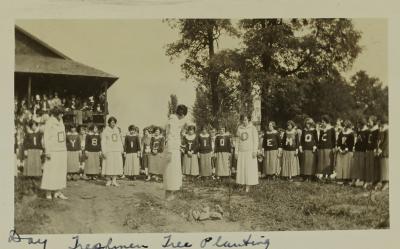
Hood College has a long history of caring for one of the most diverse collections of trees in the area.
History of Trees at Hood
Selecting and planting trees on the campus is a tradition that dates back to the earliest years of the College. Mrs. Gertrude Apple, the second wife of Hood's own first College President Joseph Henry Apple, took great pride in selecting a wide variety of tree species to provide unmatched biodiversity in the region. Much to President Apple's dismay, Mrs. Apple's great personal interest in "trees, gardens, and shrubbery" compelled her to solicit friends and acquaintances to donate to the beautification of buildings and grounds, rather than seeking larger gifts for endowment and buildings. Mrs. Apple wrote, "...I have realized that beautiful and cultural surroundings are an inspiration to our best efforts...and so I am determine that this principal should prevail at Hood." (Hood College Bulletin, 1939)
In 1939, Mrs. Apple documented over 500 trees of 48 varieties were planted on the campus from 1915 to that time, with "...great regret is that much has been lost from various causes." There is much speculation on which of these trees survive to this day.
Because campus trees have been admired and loved by generations, many a student, alumnae, faculty, staff and community member have penned articles, photographed, inventoried, and shed tears over our wonderful grouping of trees. Hood students would take part in group tree planting events to commemorate special campus occasions. Alumni have raised thousands of dollars to replace trees damaged by storms (See News Post article below)
Notable Tree Dates at Hood
- 1915 A row of Norway Maples were planted in 30' intervals along south front of campus when the grounds were graded, seeded and planted for the college to move from Winchester Hall.
- 1939 Mrs. Apple documents tree specimens (& other gifts) donated to the college over the years (Hood College Bulletin, 1939)
- 1970 Dr. Randle Elliott (4th President of Hood) asked Mr. Frank to identify, map, and key tree specimens on campus.
- 1979 ~130 trees on campus and within Baker Park received tree identification labels (some still present today) from efforts by Frederick Community Commons and Dr. Susan Munch (Hood Assistant Professor of Botany)
- 1984 Dr. Martha E. Church (9th President of Hood) alerted alumnae of the summer storm that destroyed 22 and damaged 84 campus trees, compelling a large fundraising effort to plant more than 40 trees that fall. Donors included Emily Apple Payne and Elizabeth Apple McCain, both daughters of Hood's First President. (see photo)
Interesting historical articles on campus trees:
- "Over 1,000 Trees Found On Campus" (Hood College Blue & Grey, June 1933, pg 5.)*
- "Roots at Hood College" by Christine Plankenhorn Tischer '65 (PDF, Hood College Bulletin, 1979, Vol.55 No.1.)**
- "Arbor ardor: let there be trees on the Hood College campus" (PDF, The Frederick News Post, December 21, 1984)*
Campus Trees Today
Our trees continue to be a source of beauty and wonder, and it is now known that trees do more for us than provide us joy. As the community around us is developed and the climate changes, trees also help clean the air and provide habitat for wildlife, while also reducing stormwater pollution and urban heat. Faculty use campus trees as outside lab experiences, giving students the opportunity to test their field skills measuring and identifying specimens for class.
The last official campus tree inventory was completed in 2007 by Bartlett Tree Experts. As part of this inventory, the trees were tagged with numbers embossed on circular metal tags. Many of these tags have been damaged or lost. There has been a renewed interest in updating the inventory.
In 2020, the Frederick County Forestry Board evaluated a select number of trees on campus to determine eligibility to the Maryland State Big Tree List. We are proud to say that several have achieved such designation. Hood's campus is home to three Frederick County Champions and one State Champion (Big Leaf Magnolia); see more Champion details below.
A Hood Campus Tree Walk has been developed to help tree-lovers of all ages locate and learn about unique trees around the campus, including those on the Big Tree List. A printable map and an interactive site is available online to follow the campus walk and learn about each tree. Campus Tree Walk details are below.
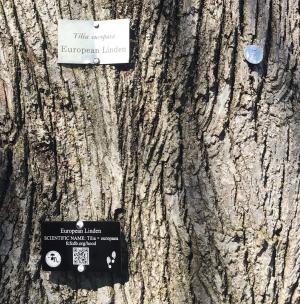
The trees on the Campus Tree Walk now have new black rectangular identification tags installed in 2021. The new tags list the common and scientific name of the tree species, as well as a "QR code" that, when scanned with a smart device, will connect the user to information about the tree. Some campus trees still have older tree identification tags. Rectangular name tags were installed in 1979; while numbered metal circle tags were part of a 2007 tree inventory.
*Reference Item Courtesy of the Hood College Office of Institutional Advancement
**Reference Item Courtesy of the Hood College Archives
Information for this page compiled by Mary Atwell, Krista Schaffert, and Susan Simonson
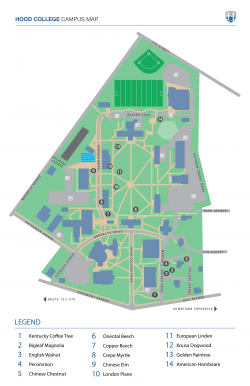
The Hood College Campus Tree Walk consists of 14 unique tree specimens located on the college grounds. To take the self-guided tour visit the Frederick County Forest Conservancy District Board Tree Walk website to view an interactive map with individual tree details and/or view and print the basic campus tree map.
Each tree on the walk is marked with an unique black sign which includes a QR code, which can be scanned with a smart phone or device for more tree information. You may find other signs on campus trees, but they are from efforts of year's past.
Hood College welcomes visitors to visit the campus to complete the walk and asks for visitors to park in designated spots or at off-street parking.
(If you decide to venture off campus, the FCFCB website also provides details for the Frederick City Tree Walk.)
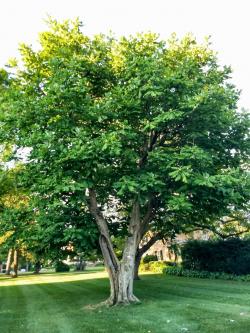 Big Leaf Magnolia (Magnolia macrophylla)
Big Leaf Magnolia (Magnolia macrophylla)
Except for tropical palms, the bigleaf magnolia has the largest simple leaf of any native North American tree, with leaves up to 36” long. The species is widespread, but not a common landscape plant due to the messy large leaves. This campus tree is an amazing specimen especially in the spring or summer, with its long leaves and beautiful, creamy white blossoms that can reach up to a foot in width. The tree also produces furry, round seed pods that can be as big as a baseball.
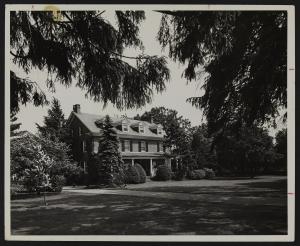
- Mrs. Apple Tells of Gifts to College. Hood College Bulletin, May 1939 Courtesy of the Hood College Office of Institutional Advancement
- Trees at Hood College, presumably by Mrs. Apple while still at Hood. undated. Courtesy of the Hood College Archives
Campus Tree Stories

Campus Tree Walk Tags Installed
Informative tree tags were installed on 14 campus trees to guide visitors through our new campus tree walk.
Students, staff, and members of the community are encouraged to walk the campus ground on this digital self-guided tour.
Notable Campus Trees
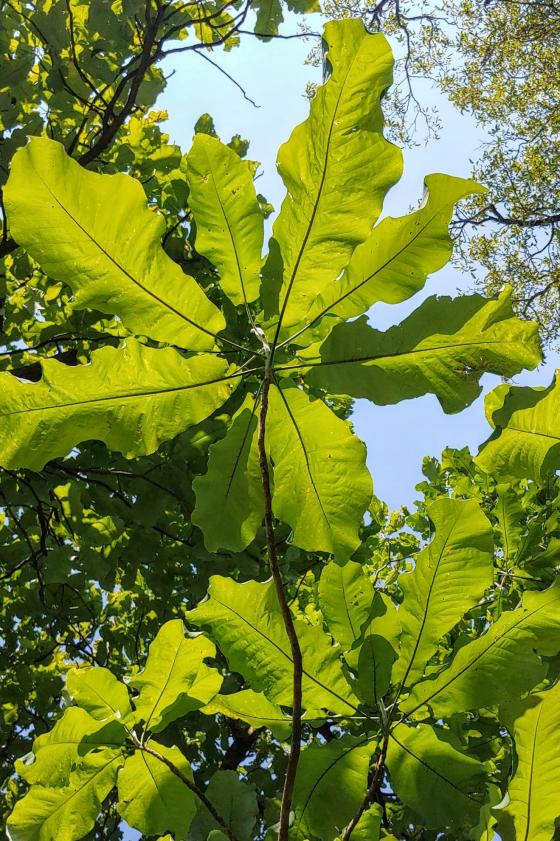
Leaves of the Big Leaf Magnolia in summer (photo credit: B. Dell'Agnello)
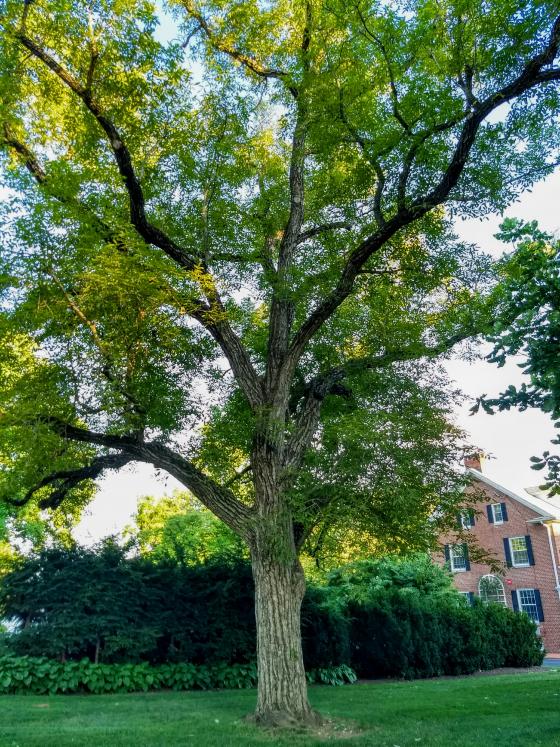
English Walnut on Admission's front lawn (photo credit: B. Dell'Agnello)
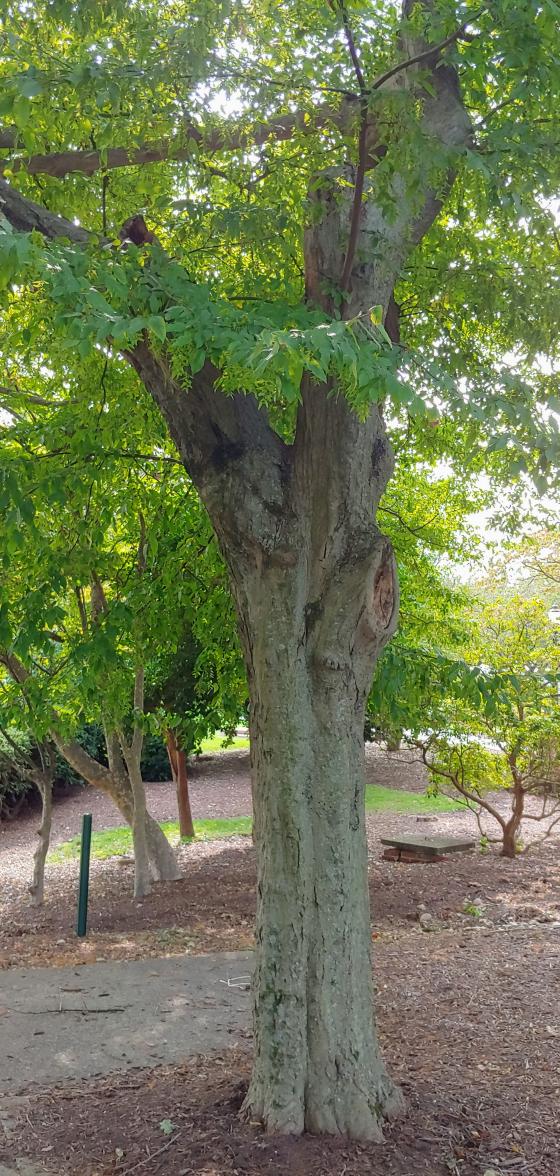
County Champion American Hornbeam (photo credit: B. Dell'Agnello)
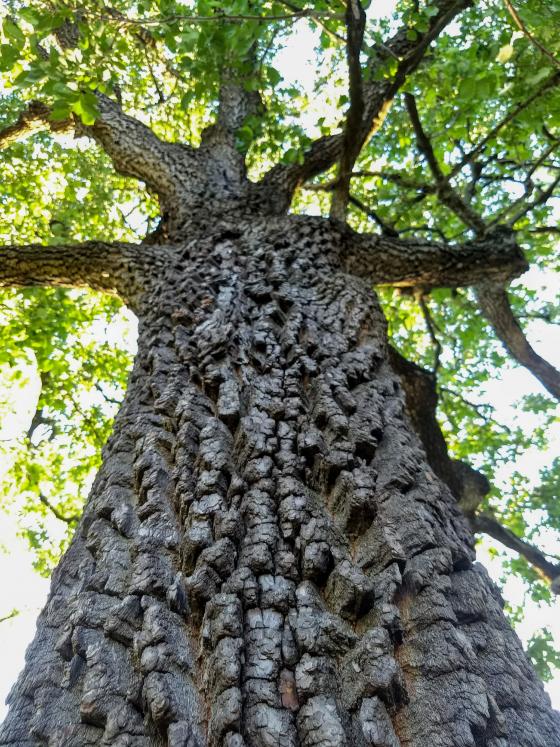
Bark of Persimmon Tree on Admission's House lawn (photo credit: B. Dell'Agnello)
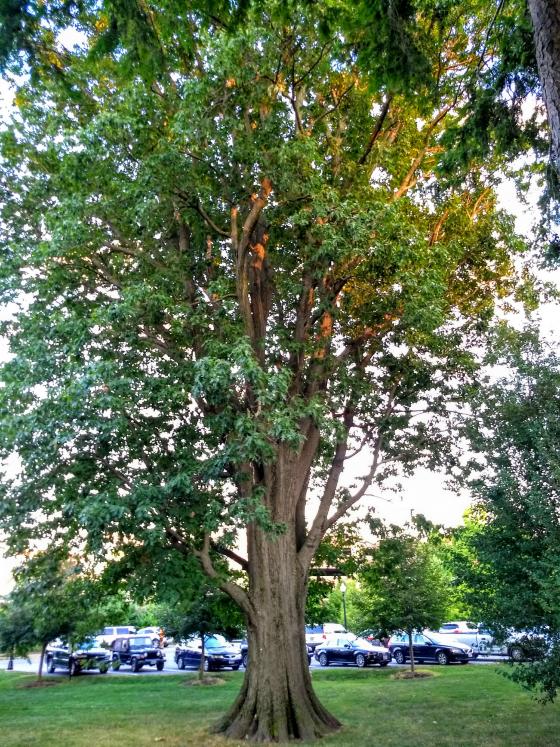
Oak tree near observatory (photo credit: B. Dell'Agnello)
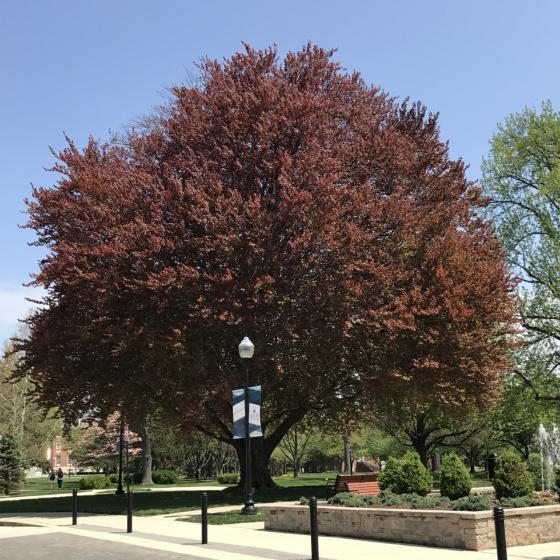
Copper Beech near Alumnae Hall (photo: S. Simonson, 2017)
Are you ready to say Hello?
Choose a Pathway
Information will vary based on program level. Select a path to find the information you're looking for!
